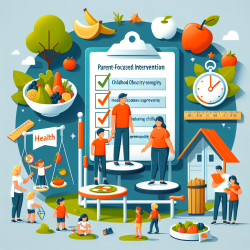As a practitioner in the field of health and wellness, staying informed about the latest research is crucial for improving patient outcomes. A recent study published in the International Journal of Environmental Research and Public Health reveals a fascinating connection between surrounding greenness and the incidence of type 2 diabetes mellitus (T2DM) in Taiwan. This blog will explore these findings and discuss how practitioners can apply this knowledge to enhance their practice.
The Study: An Overview
The research conducted by Tsai et al. (2020) utilized data from Taiwan's National Health Insurance Research Database to examine the relationship between exposure to surrounding greenness and T2DM incidence. The study followed 429,504 subjects from 2001 to 2012, using the normalized difference vegetation index (NDVI) to measure greenness. The results were compelling: greater exposure to green spaces was associated with a lower risk of developing T2DM (adjusted HR = 0.81, 95% CI: 0.79–0.82).
Why Greenness Matters
The inverse relationship between greenness and T2DM suggests that exposure to natural environments may have protective health benefits. The mechanisms behind this association could include increased physical activity, reduced stress levels, and improved air quality—all factors that contribute to better metabolic health.
Key Findings:
- Physical Activity: Proximity to green spaces encourages outdoor activities such as walking or jogging, which are beneficial for maintaining healthy blood sugar levels.
- Stress Reduction: Green environments have been shown to lower stress hormones like cortisol, which can negatively impact insulin sensitivity.
- Air Quality: Vegetation helps filter pollutants from the air, reducing exposure to harmful substances that may exacerbate metabolic conditions.
Implementing the Findings in Practice
Practitioners can leverage these insights by advocating for increased access to green spaces within communities. Here are some actionable steps:
- Promote Outdoor Activities: Encourage patients to spend more time in parks or gardens as part of their lifestyle modification plans.
- Collaborate with Urban Planners: Work with local authorities to integrate more green spaces into urban designs.
- Educate Patients: Inform patients about the health benefits of spending time in nature and how it can complement their diabetes management plans.
The Need for Further Research
While this study provides valuable insights, further research is needed to explore the specific mechanisms through which greenness impacts T2DM. Understanding these pathways can lead to more targeted interventions and policies aimed at reducing diabetes prevalence globally.
To read the original research paper, please follow this link: The Effect of Surrounding Greenness on Type 2 Diabetes Mellitus: A Nationwide Population-Based Cohort in Taiwan.










